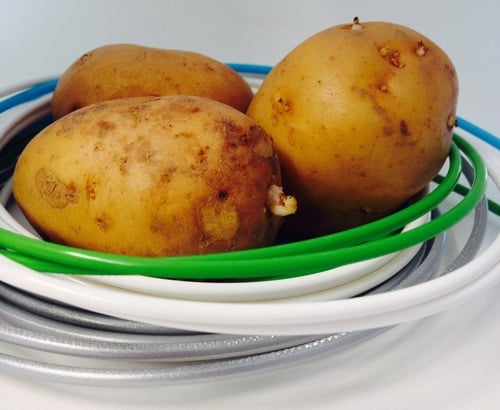
People have been experimenting with a filament made from solanyl. It’s a biopolymer that’s made from potato skin?
It is always surprising to see unusual materials being put into a 3D printer. If it can be made into a filament and melts at less than 260C, you can bet someone has or will 3D print objects with it. Solanyl, according to Rodenburg Biopolymers, is:
Mainly based on reclaimed side stream starch from potato processing industry grain, root or seed and or flour based resources. Solanyl® is special tailored for various converting methods and is a renewable substitute for various petroleum-based plastic applications like e.g. PP and HDPE, LDPE.

In this case, folks at Fab Lab Breda in The Netherlands used a small amount of solanyl filament and set it up on their printers. They found the material to take longer to solidify when cooling, thus they had to significantly slow the extrusion speed, as well as determining the optimum temperature for extrusion (which turned out to be 185C).
The result is a correct 3D print with a beautiful color, shine and texture.
While most personal 3D printers today operate with PLA or ABS plastic, there are a vast number of other plastics available for experimentation. Some makers use HDPE, Nylon and PET, but many, many more exist, each with differing strength, appearance, temperature, cost and safety properties. Expect more experimentation.
And the best part of 3D printing solanyl? Your print area will smell like Baked Potatoes.
Via 3D Hubs

